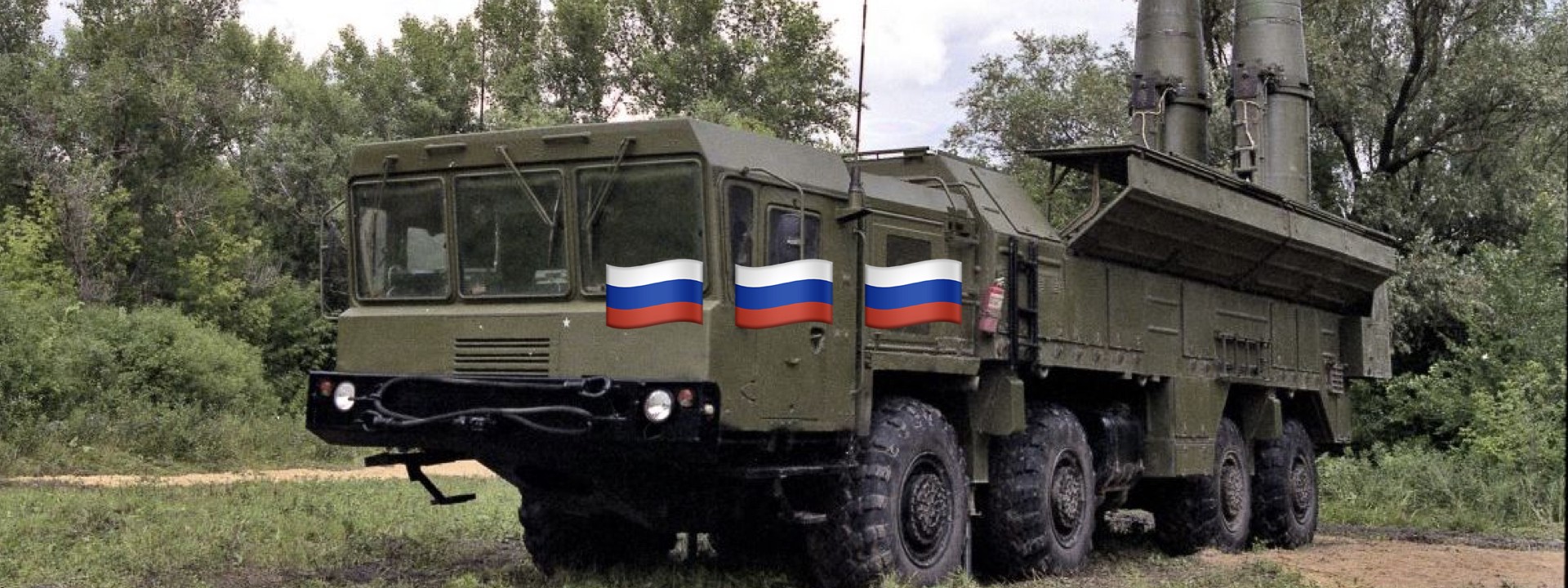#PutinAtWar: Iskanders To Stay
A quick look at permanent Iskander-M deployment in Kaliningrad and North Ossetia regions
#PutinAtWar: Iskanders To Stay

A quick look at permanent Iskander-M deployment in Kaliningrad and North Ossetia regions

On February 5, Lithuanian Minister of Defense Raimundas Karoblis stated the Russian Military was shipping nuclear-capable Iskander-M (Искандер-М and NATO reporting name SS-26 Stone) units to Kaliningrad for permanent deployment. According to his statement, on February 5 at 10:00 (UTC), cargo ships with Iskanders reached the port of Kaliningrad and continued to move to their permanent deployment positions.
@DFRLab monitored the developing Iskander situation in Kaliningrad throughout 2016. Regardless of the real or perceived unbalancing effect of the permanent Iskander deployment, it further fueled an already sensitive security situation across the region.
The news that the Russian military finished preparations for permanent Iskander-M deployments appeared on January 31 in Russian media. According the news report, the first phase of construction was already finished and the Iskanders were expected to reach Kaliningrad in early 2018. These units were received by the 152nd Guards missile brigade in Chernyakhovsk, Kaliningrad (152-я гвардейская ракетная бригада). Furthermore, according to RIA, Iskander-M permanent deployment infrastructure was also established in North Ossetia.
https://www.interfax.ru/russia/597877
On February 5, Russian Media outlet Interfax (Интерфакс) asked Chairman of the State Duma Defense Committee Vladimir Shamanov if the Lithuanian MoD’s claims were true. The answer that Shamanov provided was swift and direct.
We deployed them, so now what?
@DFRLab used satellite imagery to take a deeper look at the deployment locations of these weapons. Satellite imagery revealed the exact permanent location of Iskander-M units in Kaliningrad and North Ossetia. Imagery taken October 2017 detailed eight new hangars fully constructed at Chernyakhovsk military base. As recently as May 2014, signs of hangar construction were not yet visible.
The same pattern was observed at the military base in Mozdok, North Ossetia, where the 12th Missile Brigade is stationed. Twelve new military hangars of the same type seen in Kaliningrad were found in Mozdok via satellite imagery from April 2017. Similarly, no trace of construction work was visible in March 2014.
Here are these locations pinpointed on a map.
The Lithuanian Minister of Defense raised the alarm about the permanent deployment of Iskander-M units due to its perceived unbalancing effect on regional security. According to Minister Karoblis, in case of a conflict with Russia, these units could be used to cut off the strategic border shared by Poland and Lithuania, along the Suwalki Gap from NATO reinforcements. The deployment would also pose a threat to NATO countries in Europe, as Iskander-M missiles are nuclear-capable, highly mobile, and have a range of at least 400 kilometers.
Some sources argue that these missiles could reach up to 500 km, but even with a 400 km range Iskander-M units could threaten eastern parts of Germany, the Danish island of Bornholm, southern Sweden, most of Poland, the Baltic states, and northwestern parts of Ukraine.

Conclusion
The Kremlin sent a clear message with the permanent deployment of Iskander-M units to Kaliningrad that no security thaw should be expected in the region. Furthermore, these military developments pose new challenges for NATO strategists and eFP troops in the Baltic States and Poland. Iskanders came to stay, and in case of a conflict they could serve as another Russian military advantage in the Baltic Sea region.
@DFRLab will continue monitoring Russia’s military actions and developments.
Follow along for more in-depth analysis from our #DigitalSherlocks.

